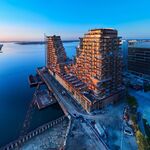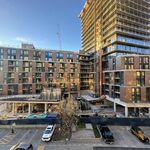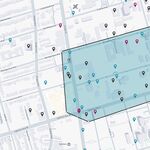TheTigerMaster
Superstar
Where does the TTC report that statistic?
Nowhere. Just something I have observed.
Where does the TTC report that statistic?
look at this picture which attributes higher ridership because of faster speeds (due to grade separation)

BMO:
Actually, water intrusion is a major problem with underground structures and it ails a lot of the existing subways stations. Also, I highly doubt there are any cost savings in terms of cleaning and maintenance - and do remember, a good number of original stations along YUS have been renovated, and it isn't cheap. Plus there is the considerable maintenance cost of mechanical and other systems (e.g. escalators, fire/safety, ventilation) to consider.
AoD
I really can't believe you took a <2K difference at the votes as proof that more people wanted Transit City...When Ford was probably the only candidate who EXPLICITLY made a point of saying he would cancel transit city. George Smitherman was kind of in-between proposing a few subway extensions as well. I'm sure more than 2 thousand people who voted for Smitherman would be on the fence about the transit plan.
Transit City is getting built weather you like it or not. All of the real engineers believe that Transit City is better then Ford's plan. I have yet to see one engineer who has come out and said that Ford's plan is better. So I suggest you take the construction noise with a smile and in a little while we'll be riding on our new light rail.
Whether it is TC or Ford's plan, I just want something built now that opens up the roads for me to drive on
It's from diverting people who would be transferring to the Danforth subway today not from grade separation itself. This would of course make congestion on the Yonge line worse because it moves the congestion further north.
I didn't mean to come off as saying it is cheaper per se, but I believe that the argument saying maintenance underground is greater, can be called awash, considering even though no one maintains the platforms on the street, the weather still takes a significant toll on the physical infrastructure. Now this can be an issue with underground water in subway stations, but regardless of where and what is built, there will always be a maintenance cost no matter whether it is LRT or subway. With today's construction standards and pre-planning practices, maintaining newer lines are much much easier than maintaining the old YUS subway.
The main problem with the Transit City plan is that there is no plan, just a "streetcars everywhere, for everyone" sentiment coupled with a blank cheque.
I have to agree with that. The Eglinton Crosstown LRT would be much more effective if it links directly with the airport, rather than taking the "premium express" rail along the Kitchener GO line, the 192 Airport Rocket, taking the slow 58A Malton bus, or taking the taxi even.If and when Transit City gets reinstated on Wednesday, will the Eglnton Line now go all the way to Pearson Airport as originally planned??? The airport connection was a huge component of the original plan.
That is a very common misconception, especially made by members of Ford Nation who still believe in the superiority of 1950s-style urban planning.LRTs are not streetcars. There are huge technical differences. Calling and LRT a streetcar is like calling a minivan a bus.




